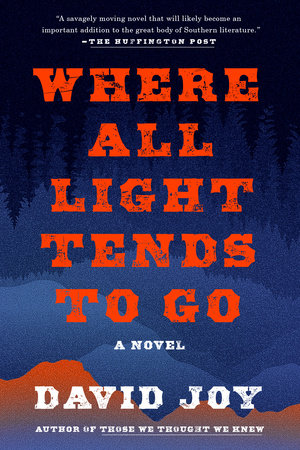READERS GUIDE
WHERE ALL LIGHT TENDS TO GO Discussion Guide
1. According to David Joy, part of the inspiration for the novel was exploring the idea of manhood. He says: “All young men are faced with discerning what exactly it means to be a man, but, for many, what is illuminated, and even glorified, is volatile.” Do you agree? What does manhood mean for Jacob? What about his father?
2. Though the novel contains much darkness and violence, there are many scenes where humor and tenderness shine through. Which moments in the book did you find the funniest? The most poignant?
3. David Joy brings to the novel a strong sense of place. What role does the setting play in the story?
4. Consider the characters of Jacob’s mother and father. What kind of legacy have they left for Jacob? Is either of them at all sympathetic?
5. Jacob and Maggie have conflicting ideas about the power of personal agency versus the inevitability of fate. Why are their viewpoints so different? Which perspective do you identify with more?
6. Once they rekindle their relationship, it takes quite some time for Maggie and Jacob to be comfortable with each other again and figure out how they want to move forward together. Why, despite all the years they’ve known each other and been close, is this process so difficult? What conflicts have gotten in the way?
7. As the violence continues to escalate, why does Jacob make the choices he does? Are there any alternatives he could pursue?
8. Were you surprised by the ending? Why, or why not?
9. In the book’s last lines, it says that Jacob “finally understood that there’d never been any difference between here or there. Only the middle ground of this wicked world mattered, the vast gap that stretched between, and those who were born with enough grit to brave it.” What do you think this means?
10. What is the significance of the title?
11. The author describes the novel as “Appalachian noir.” Does that description resonate with you? What elements does the book share with classic noir stories? Where does it diverge?

